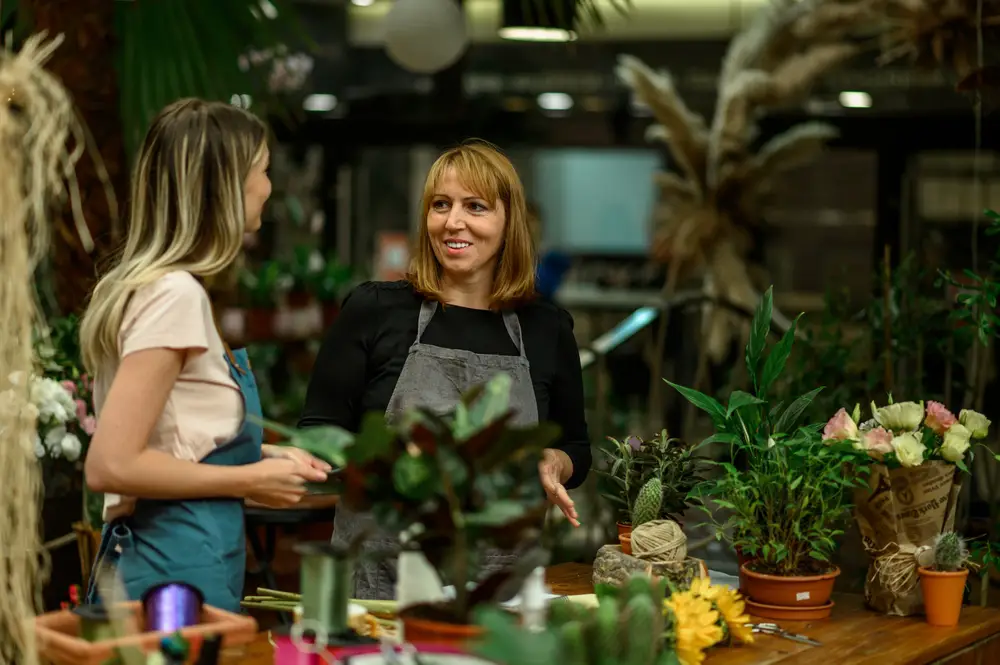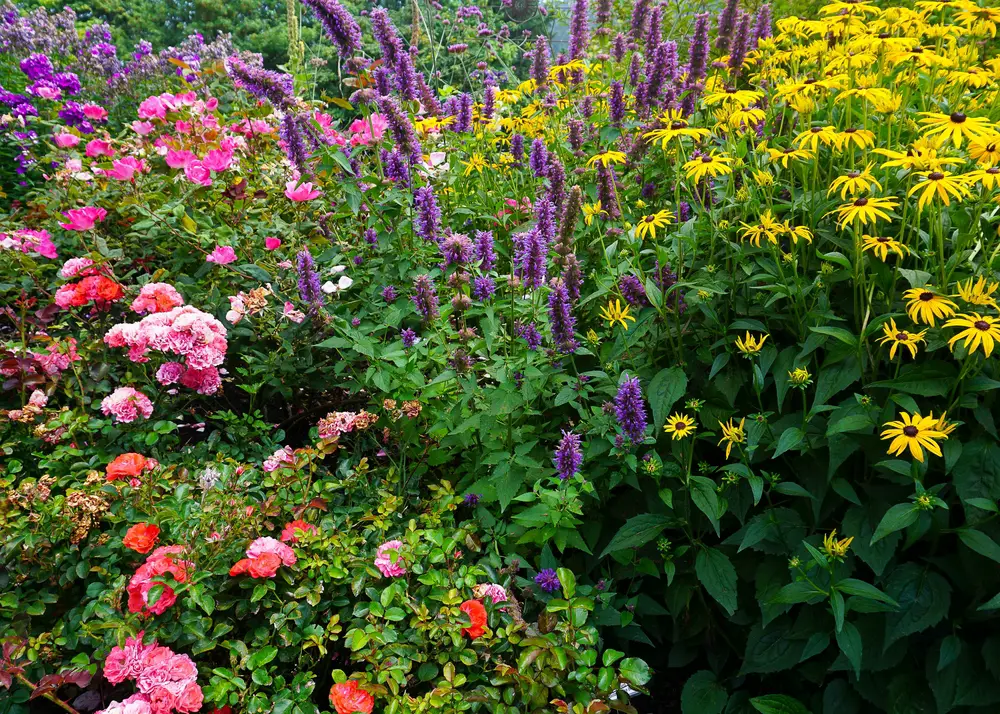Key Takeaways
When it comes to whether annual, perennial, or biennial plants are better, you should know the following:
- Annual plants are better for a flashy look and short-term commitments.
- Perennials and biennials are low-maintenance and more long-term.
- Deciding what works best depends on those factors, your area, and what you are looking for and can manage.
Deciding whether annual, perennial, or biennial plants are better for your garden can be challenging. So, let me help by explaining what to compare, why you should compare these plants, and what to do when you’re done!
Are Annual, Perennial, Or Biennial Plants Better?
Ultimately, that’s up to you and your situation. Everyone’s going to have a different set of circumstances, likes, and dislikes.
For some, annuals work great due to their beauty and only having to take care of them for one year. For others, perennials and biennials work better due to their lower maintenance needs and the fact they last longer (perennials last for three or more years, while biennials last for two).
What’s best is experimenting and learning what works for you over time.
What Plants I Prefer
I am drawn to perennials because I enjoy witnessing their transformation and adaptation over time. While they may not be as visually stunning as some annuals, I am more than happy with their less flashy appearance and more natural look. However, others prefer aesthetics above all other factors, thus making annual plants their go-to option.
What Makes A Type Of Plant Better Than Another?

It’s all about your expectations. Always ask the following:
- Why do you want to plant?
- How much time do you expect your plant to live?
- How much time do you have to care for them?
- What type of planting site do you have?
When comparing plants, consider how long the plant lives, when it flowers, how likely it is to survive, size, needs, where you plan to put the plant, and color combination.
The plant’s needs and where you put the plant are the most crucial.
For example, does a plant need lots of sun, and do you have a space like that in your yard?
Ultimately, any plant can be good depending on what your and its needs are. Many of the above needs will even differ within plant types (such as one annual plant needing more sun than another). So, it’s also essential to look beyond plant types when comparing them.
Consulting with a gardening expert also helps.
What To Compare With Annuals, Perennials, And Biennials

The following things are essential to compare between annuals, perennials, and biennials. Let’s start with their lifespans.
Lifespan
Annuals live one year. Biennials live two years, and perennials live three or more.
When They Flower
All plants can bloom from spring to fall. However, each plant type has different flowering periods. Typically, perennial plants have shorter flowering periods, biennials flower for one year only, and annuals flower once in spring and summer.
How Well They Survive
Perennial plants are indeed known for their durability. Still, it’s important to note that not all perennials are created equal regarding resilience.
While an annual (in Canada) such as lantana can endure a variety of stressors, they cannot survive in temperatures that drop below zero. In contrast, biennials are as tough as most perennials while possessing a two-year life cycle, enduring the cold winter of their hardiness zone.
Their Needs (Such As Sun And Water)
Perennials, biennials, and annuals have specific plants with a wide range of needs. This range includes, for example, plants that need full sun versus those that require full shade.
Most plants love the sun; nonetheless, there is an increasing market for indoor and annual plants for shady areas.
Nearly all plants need well-drained soils, meaning the soil needs to retain water without saturation or a fast-dry soil.
Where You Can Put Them
You can put annuals in garden beds, but they look better in pots and raised beds. Perennials and biennials look good together in garden beds.
Planting annuals in outdoor pots or raised flower beds is a great idea. Outdoor pots offer an excellent chance to enhance your landscape with beautiful plants that can creatively impact your patio, porch, house entrance, or interlock space.
Consider blending some annual plants with perennial and flowering or evergreen bushes for a maximum effect of color and contrast. Remember each plant’s necessities and the future death and removal of your annual plant in fall or winter.
Combining biennials and perennials can create a visually appealing garden. While biennials may not last forever, neighboring perennials can quickly fill the space with new shoots. Additionally, allowing natural reproduction within biennial plants can ensure continuous generations of those plants.
When deciding on a new location, it’s crucial to consider your plants’ specific requirements for optimal growth and well-being. For example, while many decorative grasses need full sunlight to survive, Japanese forest grasses flourish in partial shade. Moreover, certain plants can overgrow and cause damage to surrounding plants. Consider each plant’s necessities and characteristics; you will have a gorgeous garden in no time.
Size Needs
Perennials, annuals, and biennials all have different-sized plants. So, while there’s no difference in sizing between plant types, it’s still essential to consider a plant’s potential size and space needs unique to that particular plant.
To do so, consider the space needed for each plant from its center to its outermost point. Visualize your planting site and what’s already there to avoid overcrowding.
Every plant will include specific information on how it grows, such as what size it reaches, how fast it grows, and when it might be a good time to reduce the canopy (cut its leaves and branches).
Dragon wing begonias are highly sought-after for their beautiful appearance and versatility. Gardeners commonly put these plants in hanging baskets. However, you can also plant them in flower beds to enhance the overall aesthetic.
Imagine you purchase a dragon wing begonia in May and will be under full sun; you can expect it to grow to more than twice its initial size at the end of the season. It’s crucial then to calculate the maximum size of the plant (24 inches) and measure from the center of any nearby plants to the new plant’s center, leaving a generous 24 inches of space between them. With proper spacing and planning, your annuals will require minimum pruning and care.
Climate Zone Needs
When planting, consider your hardiness zone (how cold or warm your area is yearly) and specific location.
Lupins, for example, can produce stunning flowers in the spring and survive in some northern areas. However, the further north you go, the more you should consider your plant an annual, as it would only live for one year.
In other words, every plant has specific hardiness zones it’s most suited for.
Furthermore, consider that a plant would do better than another in a particular location if it has the proper environmental conditions, such as climate and weather.
When considering hardiness zones, remember that this concept mainly applies to biennials and perennials, not annuals. Annuals will not survive through the fall or winter and cannot toughen up or go dormant to reappear in the next winter season. Perennial and biennial plants, however, can survive through different seasons.
Hardiness zones also work differently in different countries. USA and Canada have different hardiness zones, but you can read their classifications similarly. The lower the number, the farther north and colder a plant can survive.
Hardiness zones also have letters (a and b). “a” is colder than “b.” For example, zone 1a in the United States is -60°F to -55°F (-51.1°C to -48.3°C), and zone 1b is -55°F to -50°F (-48.3°C to -45.6°C).
The zone number indicates the coldest temperature a plant can withstand, which varies based on location. However, just because a plant can survive doesn’t mean it will thrive. For the best results, consulting with an experienced gardener who can suggest the most appropriate plants for your garden needs is essential.
What To Do After You Compare Plants

After comparing annuals, perennials, and biennials, do the following steps in order.
1 – Search Lists Of Popular Plants In Your Area
Use the internet, books, or references from a gardener friend. Ensure your information is about the plants in your area and not from another part of the world.
2 – Choose Your Plants
Consider color, size, survival rate, and all other relevant information.
3 – Double-Check Your Garden Conditions
Make sure those plants can survive on your site. Beginner gardeners tend to overcrowd their gardens the first time they make their garden beds. Consider how wet the area is, if it is shady, and sun exposure (north, east, south, or west).
4 – Check Your Soil
To get a soil sample, you must dig small holes and closely examine the color and texture of it. If you notice that your soil is hard to penetrate and has a darker hue, it may indicate you have dense clay. In such cases, purchasing garden or triple-mix soil is highly recommended to ensure optimal plant growth conditions.
5 – Find Garden Centers With Your Plants
Research which garden centers are in your area and if they have your chosen plants. You should purchase your plants from local areas where they are more guaranteed to endure your local climate.
6 – Ask For Help If You Need It
When arriving at a garden center, find where you need to go. Even if you’re sure you want particular plants, asking for additional information from knowledgeable employees never hurts. You’ll find your plants faster this way and care for them better, too.
7 – Plant And Grow!
Take your plants home and start planting. Follow all growing instructions, and soon, you’ll have your very own beautiful garden!
Why You Should Compare Annuals, Perennials And Biennials
Properly comparing annuals, perennials, and biennials allows you to make more informed decisions about your garden. Remember, a plant can look fantastic in one place and not so much in another. That same plant may look off in some contexts but extraordinary in others.
Foxgloves look unique and natural if you blend them with delphiniums, rudbeckias, and echinaceas because they have tall flowers, different colors and textures, and a natural appearance. Not all plant combinations are practical, though, and some are more aesthetically pleasing than others.
Understanding every plant has unique qualities and characteristics is crucial, and their behavior and reactions can vary greatly. Your success with the plant and its growth in your garden will depend on your ability to prepare accordingly. Therefore, you must stay aware of these differences and take necessary measures to ensure their prosperity.

